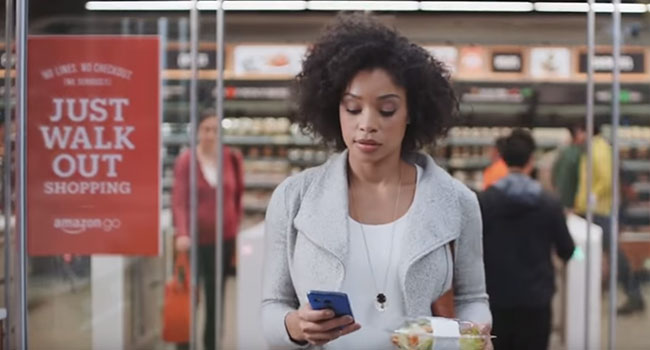
The Security of Amazon Go
The convenience store of the future has some hefty security.
- By Sydny Shepard
- Jan 23, 2018
Yesterday Amazon's first brick-and-mortar convenience store, opened its doors. Amazon Go is a 1,800 square-foot mini-market packed with shelves of items you would commonly find at a the corner store, but Amazon took the idea of "convenience" and made it, well, more convenient.
The new Amazon Go store has no lines and no cashiers and touts the fact that all you have to do is literally grab what you need and go. But how does it work? With Amazon's "Just Walk Out Technology," which is basically just a bunch of security measures.
Here's the breakdown on the security inside Amazon Go:
The first thing you are greeted by at the front door is a row of three turnstiles, which are activated by using a unique QR Code found in the Amazon Go app. These turnstiles keep those who are not set up with the Amazon Go app out of the store while letting those who have downloaded the app and linked it to their Amazon account in. These turnstiles are what register what users are in the store and when they leave.
When a user enters the store, the are encouraged to pick up and put back as many items as they want. When an item is picked up, the store automatically adds it to the user's virtual shopping cart. If it is returned to the shelf, it will be removed from the online shopping cart. When the shopper leaves the store, they usually receive a receipt of their purchase within just a couple minutes.
The ceiling of the store is covered with cameras that watch your every move while you are in the store. Using the QR code you scanned at the turnstile, the cameras can help register which user is picking up what item. The cameras work in tandem with the turnstiles to ensure what you left the store with is what you are paying for.
Amazon won't say much more about how this video surveillance system works, other than to say it involves sophisticated computer vision and machine learning software. This means that there isn't any tracking chips on the merchandise in the store. It is the placement of items on the shelves and the cameras in the ceiling that keeps track of who picked up what.
Some reporters have attempted, with the permission of Amazon, to shoplift from the store. The New York Times' Nick Wingfield wrote that he attempted to steal a four-pack of vanilla soda while wrapping it with a shopping bag with it was still on the shelf and then tucking it under his arm while walking out of the store. His experiment failed and minutes later, he received a notification that he'd been charged for the soda.
About the Author
Sydny Shepard is the Executive Editor of Campus Security & Life Safety.